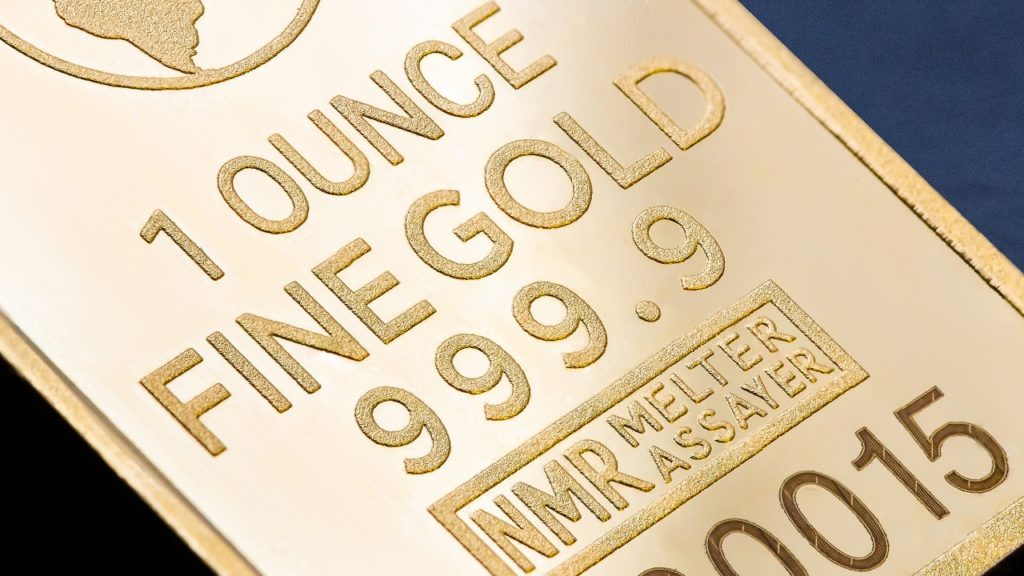The Mainstream Is Wrong About Rising Bond Yields and Gold
Prices are going up. The Federal Reserve is printing money at an unprecedented rate. The US government continues to borrow and spend at a torrid pace. As Peter Schiff put it in a recent podcast, we’re adrift in a sea of inflation. Gold is supposed to be an inflation hedge. So, why isn’t the price of gold climbing right now?
In a nutshell, rising bond yields have created significant headwinds for gold. And the mainstream is reading rising yields and their relationship to gold all wrong.
It really comes down to expectations. Most people in the mainstream view rising yields as an inflation signal, and they expect the Federal Reserve to respond to this inflationary pressure in a conventional way. They expect the Fed to tighten monetary policy, raise interest rates and shrink its balance sheet.
As Peter Schiff has explained on numerous occasions, this won’t happen. The Fed won’t fight inflation because it can’t. It will ultimately surrender to inflation.
Right now, the markets sense that inflation is going to be moving higher. And maybe even higher than what the Fed is acknowledging. But I think the markets still believe the Fed — that the Fed will be able to contain the inflation problem before it really runs out of control. So, it’s the expectation that the Fed’s going to fight inflation by raising rates — that’s what’s pressuring gold. But the markets are wrong. The Fed is not even going to attempt to fight inflation. It’s going to surrender. Inflation is going to win without a fight. And when the markets realize that the Fed is all bark and no bite, and that inflation is going to be an even bigger problem that is going to be uncontrollable, then the bottom’s going to fall out of the dollar and gold’s going through the roof.”
Given the level of government borrowing and spending, the Fed can’t let rates rise. It would topple this economic house of cards sitting on top of a mountain of debt. You can’t sustain a debt-based economy in a high interest rate environment. And the Fed certainly can’t shrink its balance sheet when the US Treasury is trying to sell trillions of dollars in US Treasuries into a market that is already oversaturated. One of the reasons we’re seeing rising bond yields is because the US government continues to flood the market with Treasuries. It’s a simple supply and demand dynamic. If anything the Fed will have to buy even more Treasuries to keep the bond market propped up. I expect to see additional quantitative easing before we see any kind of tapering or balance sheet reduction.
That means more inflation — not less.
Peter said he doesn’t know if gold has hit its lows yet, but he knows we haven’t seen the highs.
Peter isn’t the only analyst that believes gold’s best days are ahead. Guardian Vaults business development manager John Feeney told Kitco News that he thinks the price of gold could double in the next five years.
One of the main drivers for gold demand is a hedge against inflation,” he said. “Inflation usually comes about after a rapid increase in the money supply. That’s exactly what we saw in 2020 — an unprecedented expansion of the money supply globally last year.”
Most significantly, Feeny noted that rising bond yields aren’t necessarily a bad sign for gold. In fact, we’ve seen bond yields and the price of gold rise simultaneously before – during the stagflation period in the 1970s.
Between 1972 and 1982, the yield on the 10-year Treasury rose from 6% to 15%. During that same period, the federal funds rate rose from 5% to 20%. Meanwhile, the price of gold climbed from $50 an ounce to $650 per ounce. Gold saw a better than 1,000% return despite the dramatic rise in bond yields.
Feeny noted, “During the 1970’s President Nixon wanted strong economic growth and low unemployment at any cost and was not concerned about rising inflation. The sharp jump in the money supply is what preceded a runaway inflationary period.”
Sound familiar?
Jerome Powell insists that price inflation isn’t a problem. He tells us any rise in prices will be “transitory.” Much like the policymakers in the 70s, government officials and central bankers are fixated on unemployment and fixing the economy. They don’t care about inflation. Once they realize inflation isn’t “transitory,” it will be too late.
Feeny picked up on the similarities between Nixon and the current regime.
The language that’s been coming out of the Fed lately has been similar to Nixon in the fact that they say that they’re happy to let inflation run above target for a period as well. They’re more concerned about low unemployment and economic growth and less concerned about inflation. The current environment is similar to the 1970s. I feel like it could rise a lot further than what they anticipate and a lot further than what they would like to see.”
Currently, investors seem fixated on rising yields. Feeny said that attitude won’t last once the markets figure out inflation is for real and the Fed had no ability to fight it in a meaningful way.
If we did see inflation running out of control in years to come, there is almost zero risk in owning gold, as it would have an incredibly high percentage chance of performing well under that environment.”





 Cocoa prices have dumped since rocketing to a dramatic peak last month as an El Nino cycle winds down and traders rush out of the illiquid market. For now, depreciating fiat currencies are still keeping the cocoa price still far above its 2023 levels. Coffee has had a similar rise and subsequent correction — but now, inflation and other factors are conspiring to […]
Cocoa prices have dumped since rocketing to a dramatic peak last month as an El Nino cycle winds down and traders rush out of the illiquid market. For now, depreciating fiat currencies are still keeping the cocoa price still far above its 2023 levels. Coffee has had a similar rise and subsequent correction — but now, inflation and other factors are conspiring to […] California’s government bet that they knew better than the free market. And now millions are paying the price. The story begins in 1919, when the city of Berkley, California instituted legislation setting aside districts that would only allow the construction of single-family housing. The idea spread, and soon much of California’s urban areas had adopted the zoning policy. Today, approximately 40% of the total land in Los Angeles is […]
California’s government bet that they knew better than the free market. And now millions are paying the price. The story begins in 1919, when the city of Berkley, California instituted legislation setting aside districts that would only allow the construction of single-family housing. The idea spread, and soon much of California’s urban areas had adopted the zoning policy. Today, approximately 40% of the total land in Los Angeles is […] The yen was once known as a safe-haven currency for investors to protect themselves when broader markets are shaky or other currencies are dropping, but those days are numbered. A stable government and consistent (and low) interest rates have been some of the driving factors, but it’s the unwinding of that ultra-low interest rate policy that will be the yen’s “safe […]
The yen was once known as a safe-haven currency for investors to protect themselves when broader markets are shaky or other currencies are dropping, but those days are numbered. A stable government and consistent (and low) interest rates have been some of the driving factors, but it’s the unwinding of that ultra-low interest rate policy that will be the yen’s “safe […] Whenever an election year rolls around, domestic manufacturing becomes a more central theme of discussion. Candidates from both sides, who seem to disagree on almost everything else, never waver in their commitment to auto manufacturers in Detroit and the steel industry. Republicans and Democrats never forget to remind the American public that they will try […]
Whenever an election year rolls around, domestic manufacturing becomes a more central theme of discussion. Candidates from both sides, who seem to disagree on almost everything else, never waver in their commitment to auto manufacturers in Detroit and the steel industry. Republicans and Democrats never forget to remind the American public that they will try […] The wizards at the Fed and US Treasury have been forced to acknowledge that their “transitory,” inflation is, in fact, quite “sticky.” And with the inflation elephant now acknowledged by the circus of high finance, Treasury yields keep inching up, recently reaching 4.7% — the highest since November. The Fed is stuck: It needs to raise interest rates to tame inflation and […]
The wizards at the Fed and US Treasury have been forced to acknowledge that their “transitory,” inflation is, in fact, quite “sticky.” And with the inflation elephant now acknowledged by the circus of high finance, Treasury yields keep inching up, recently reaching 4.7% — the highest since November. The Fed is stuck: It needs to raise interest rates to tame inflation and […]